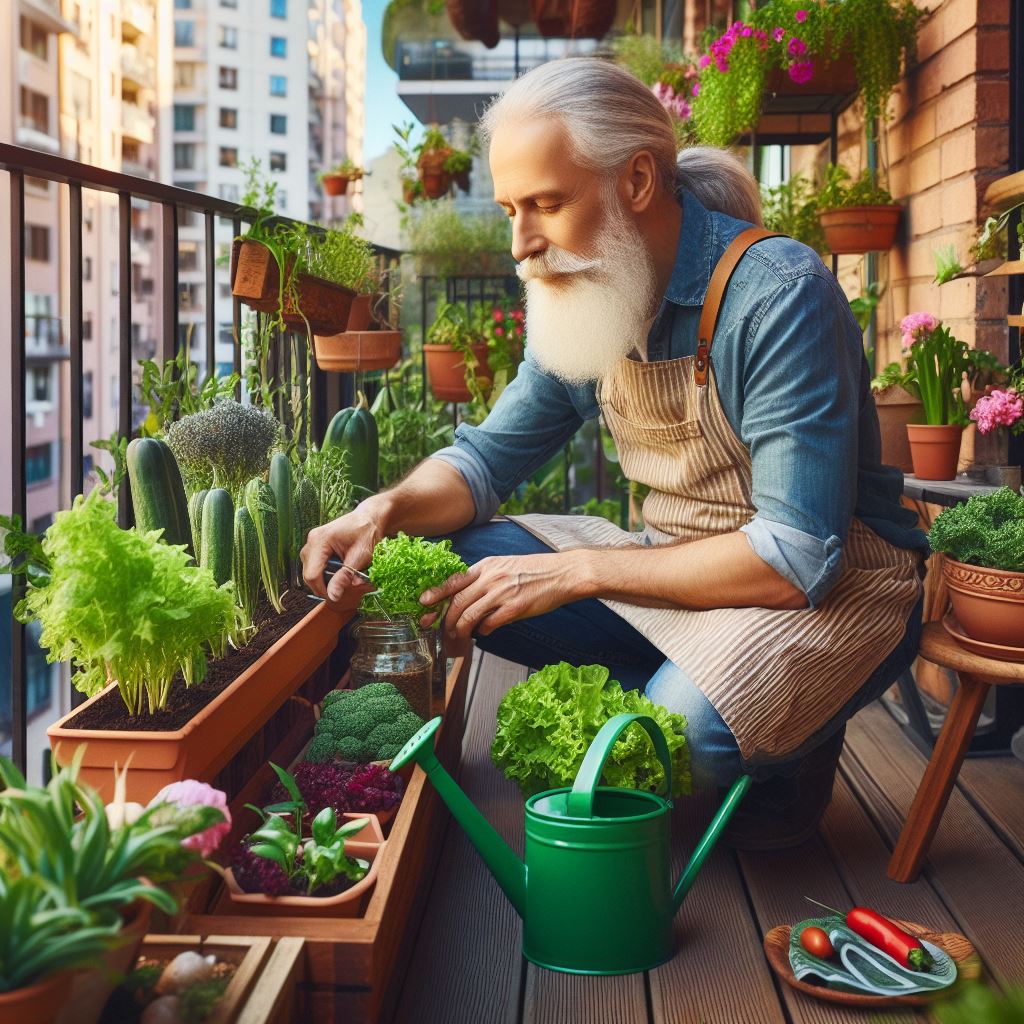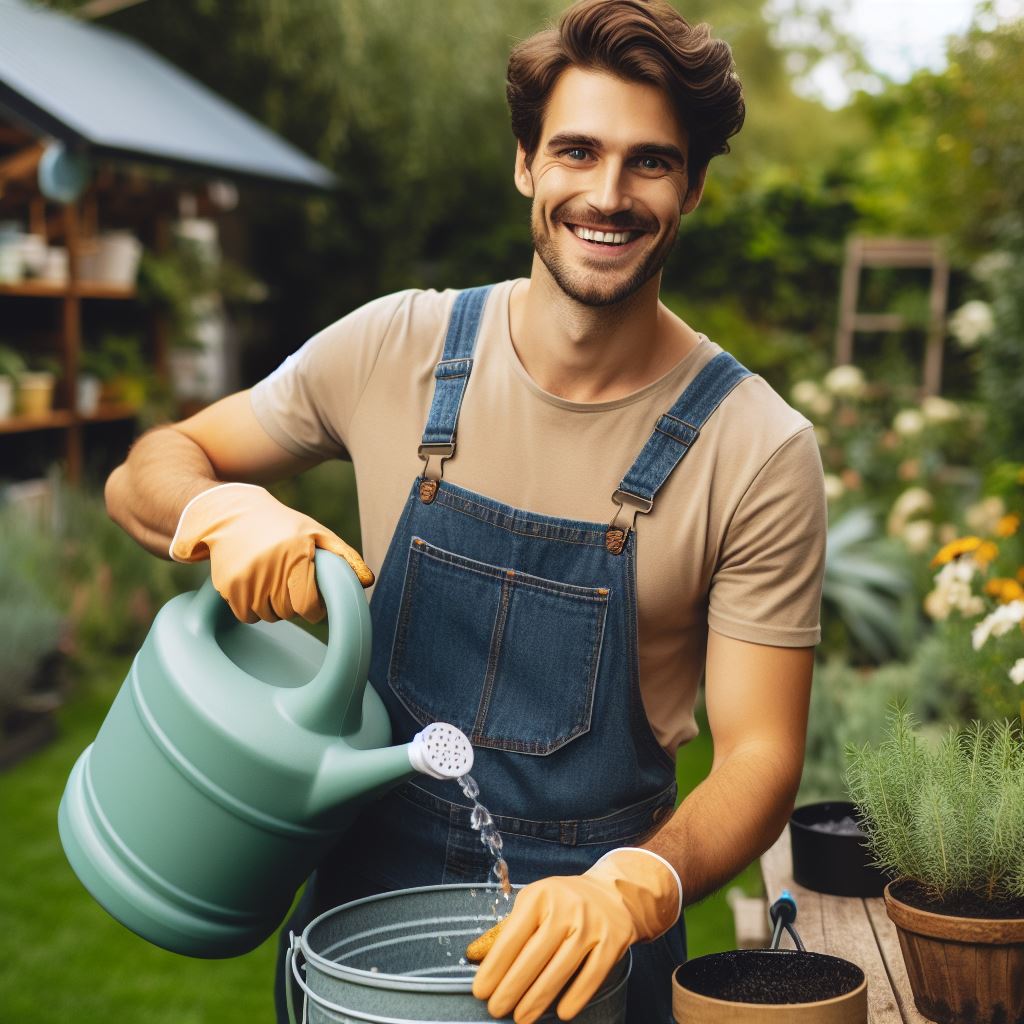Introduction
Urban farming involves growing fruits, vegetables, and raising animals for food in cities.
It allows producing food close to consumers. Urban farms effectively reuse vacant city lands and save open spaces further out.
Intensive methods optimize small spaces for bountiful harvests.
Backyard farms readily provide households hyper-local, nutritious, affordable produce.
Community gardens strengthen food security for entire neighborhoods, alleviate hunger, provide skills and jobs.
Rooftop agriculture taps underutilized vertical real estate. Indoor vertical farms leverage hydroponics and LED lighting to multiply yields per square foot.
For urban dwellers with just balconies or patios, micro-gardening in containers offers participating in this movement.
Herb spirals, wall-mounted planters, hanging baskets, and stacked pots cultivate herbs, greens, dwarf vegetables.
Even indoors, countertop gardens based on aquaponics or aeroponics grow hearty greens.
Urban farming responsibly utilizes every bit of space in dense cities. It empowers residents to gain food self-reliance using cutting-edge technology.
Environmental and social benefits enhance metro life quality for all.
Choosing the Right Plants for Small Spaces
In order to have a successful urban farm in a small space, it is important to carefully select the plants you will grow.
Here are some considerations to keep in mind:
Selection of Compact and Dwarf Varieties
- Choose plants that are specifically bred to be compact or dwarf, as they take up less space.
- Look for varieties that have been developed for small gardens or containers, such as mini tomatoes or dwarf lettuce.
- By opting for compact plants, you can maximize your crop yield even in limited space.
Consideration of Sunlight and Space Requirements
- Take note of the amount of sunlight your small space receives throughout the day.
- Some plants require full sun, while others can tolerate partial shade.
- Space requirements vary, so ensure that you have enough room for plants to grow and spread.
- Consider vertical gardening techniques to make the most of your space.
Benefits of Choosing Plants that Serve Multiple Purposes
- Opt for plants that serve multiple purposes, such as providing food and attracting pollinators.
- Herbs, like basil and lavender, can be grown for culinary use as well as for their aromatic flowers.
- Choose edible flowers, such as nasturtiums, which not only add color to your garden but can be used in salads too.
- Consider planting perennial plants that come back each year, saving you time and effort.
- Utilize plants that improve soil health, such as legumes that fix nitrogen and act as natural fertilizers.
By selecting the right plants for your small space, you can optimize the use of your urban farm and achieve a productive and beautiful garden.
Read: Starting Organic Gardens: A Beginner’s Guide
Transform Your Agribusiness
Unlock your farm's potential with expert advice tailored to your needs. Get actionable steps that drive real results.
Get StartedContainer Gardening Techniques
Importance of selecting the right containers
- Choose containers with sufficient depth and width to accommodate the plants’ root systems.
- Opt for containers made of materials that are sturdy, durable, and can withstand outdoor conditions.
- Consider containers with drainage holes to prevent waterlogging and root rot.
- Select containers that complement the aesthetics of your small space for a visually appealing urban garden.
Proper soil selection and preparation
- Use a high-quality potting mix that is lightweight, well-drained, and rich in nutrients.
- Avoid using garden soil as it may be too heavy and compact for container gardening.
- Incorporate compost or organic matter into the potting mix to improve its fertility and moisture-retaining capabilities.
- Prior to planting, ensure the soil is loose and free of any clumps to promote healthy root growth.
Placement and arrangement of containers for optimal growth
- Determine the sunlight requirements of your plants and place the containers accordingly in areas that receive adequate sunlight.
- Consider grouping containers with similar light and water needs together for efficient care and maintenance.
- Arrange containers in a way that allows for easy access and airflow around them to prevent pests and diseases.
- Utilize vertical space by hanging containers or using trellises to maximize the number of plants you can grow.
Watering and fertilization techniques for container gardens
- Water plants as needed, keeping in mind the specific moisture requirements of each type of plant.
- Check the moisture level by sticking your finger into the soil, and water when the top inch feels dry.
- Water thoroughly until water drains out of the container’s bottom, ensuring the entire root system receives moisture.
- Use a balanced liquid fertilizer or slow-release granular fertilizer to provide essential nutrients to container plants.
Importance of selecting the right containers
In container gardening, selecting the right containers is crucial for the success of your urban farm.
The containers should be spacious enough to accommodate the plants’ roots, durable to withstand outdoor conditions, and visually appealing to enhance your small space’s aesthetics.
Proper soil selection and preparation
To ensure optimal growth, proper soil selection and preparation are essential.
Use a lightweight and well-drained potting mix enriched with compost or organic matter.
Loose soil without clumps promotes healthy root growth and efficient nutrient absorption.
Placement and arrangement of containers for optimal growth
Consider the placement and arrangement of containers for maximizing plant growth.
Place the containers in areas that receive adequate sunlight according to your plants’ needs. Group containers with similar requirements together for efficient care and maintenance.
Ensure sufficient airflow around the containers to prevent pest and disease issues.
Watering and fertilization techniques for container gardens
Watering and fertilization are critical aspects of container gardening.
Water the plants as per their moisture requirements and check the soil’s moisture level regularly.
Thoroughly water the plants until water drains out of the container’s bottom to ensure proper hydration of the roots.
Provide essential nutrients to the plants through balanced liquid or granular fertilizers.
Mastering these container gardening techniques will help you create a beautiful and productive urban farm in small spaces.
Enjoy the benefits of fresh herbs, vegetables, or flowers right at your doorstep.
Read: Urban Permaculture: Sustainable Tips
Vertical Gardening Strategies
Utilizing walls and fences for vertical gardening
- Walls and fences in small spaces can be transformed into vertical gardens.
- Attach planters or containers to the walls to create a vertical gardening system.
- Use sturdy hooks or brackets to secure the planters onto the walls or fences.
- Make sure the walls or fences can support the weight of the planters and plants.
- Choose plants that have shallow root systems and do not require extensive space.
Installation of trellises, shelves, and hanging baskets
- Install trellises against walls or fences to provide support for climbing plants.
- Place shelves at different heights to accommodate potted plants and herbs.
- Hanging baskets can be hung from the ceiling or mounted on walls and fences.
- Ensure the trellises, shelves, and hanging baskets are securely installed for stability.
- Arrange the plants strategically to optimize space and sunlight exposure.
Ideal plants for vertical gardening
- Choose plants that are suitable for vertical growth and have compact root systems.
- Climbing plants like tomatoes, cucumbers, and beans are perfect for vertical gardening.
- Herbs such as mint, basil, and rosemary can thrive in small vertical gardens.
- Leafy greens like lettuce and spinach can be grown in vertical planters or hanging baskets.
- Consider the lighting conditions and climate in your area when selecting plants.
Maintenance and care tips for vertical gardens
- Regularly check the moisture levels of the soil in vertical planters.
- Water the plants thoroughly, ensuring the water reaches the roots.
- Prune and trim the plants regularly to maintain their shape and promote healthy growth.
- Provide adequate sunlight to the plants by placing them in well-lit areas.
- Fertilize the plants as needed, following the instructions on the fertilizer packaging.
In short, vertical gardening is an excellent solution for small spaces.
By utilizing walls and fences, installing trellises, shelves, and hanging baskets, selecting suitable plants, and following proper maintenance tips, you can create a thriving vertical garden in your urban space.
Read: Hydroponics: Gardening Without Soil
Maximizing Limited Space with Intensive Gardening
Intensive gardening techniques
- Intensive gardening focuses on maximizing productivity in small spaces by close plant spacing.
- It involves careful planning, soil improvement, and efficient use of available resources.
Implementing square foot gardening method
- Square foot gardening divides a garden bed into small, manageable squares for efficient use of space.
- Each square is planted with a specific number of plants, depending on their size and spacing requirements.
- This method reduces the need for walking paths and minimizes wasted space between plants.
Companion planting for space optimization
- Companion planting is the practice of growing different plants together to enhance growth and deter pests.
- By choosing companion plants wisely, gardeners can optimize space utilization and improve overall plant health.
- For example, planting tall plants beside shorter ones can provide shade and maximize vertical space.
Utilizing vertical and hanging structures for additional space
- Vertical gardening involves growing plants upward using trellises, stakes, and other structures.
- It enables gardeners to take advantage of unused vertical space, especially in vertical gardens or walls.
- Hanging structures like vertical planters, hanging baskets, and plant pockets provide even more space for growing plants.
Essentially, intensive gardening techniques, such as square foot gardening, companion planting, and vertical/hanging structures, allow urban farmers to maximize limited space.
By closely spacing plants, implementing the square foot gardening method, utilizing companion planting, and taking advantage of vertical and hanging structures, small spaces can be transformed into highly productive and efficient gardens.
Read: Apartment Aquaponics: Fish & Plants

See Related Content: Seasonal Planting Guide for Compact Spaces
Creative Use of Small Spaces for Urban Farming
Balcony and Rooftop Farming Ideas
- Utilize hanging baskets or containers to grow a variety of vegetables and herbs.
- Install a vertical garden system on the walls or railings to maximize space.
- Consider using self-watering planters to reduce the need for frequent watering.
- Create a rooftop garden by placing raised beds or containers with proper drainage systems.
- Opt for compact fruit trees, such as dwarf apple or cherry trees, which can thrive in containers.
Community Gardens and Shared Spaces
- Explore local community gardens or allotment schemes where you can rent a small plot.
- Collaborate with neighbors and start a shared garden in a nearby empty lot or courtyard.
- Join community gardening groups to exchange ideas, seeds, and gardening tools.
- Coordinate with local schools or institutions to initiate urban farming projects on their premises.
- Consider participating in Farmers’ Markets to share your produce and connect with other urban farmers.
Window Sill and Indoor Gardening Options
- Utilize window sills to grow small vegetables, herbs, or flowering plants.
- Invest in vertical hydroponic systems to optimize indoor space and maximize plant yield.
- Try growing mushrooms in indoor spaces using specialized kits or containers.
- Grow microgreens on a sunny windowsill, allowing for a continuous harvest of fresh greens.
- Install grow lights to supplement natural sunlight and cultivate a wider range of plants indoors.
Utilizing Vertical Space in Small Kitchens for Herbs and Microgreens
- Hang herb planters on the walls or install shelves near the windows for easy access.
- Use a living wall system to grow herbs vertically, saving valuable counter space.
- Create a small vertical garden in the kitchen using a trellis or hanging pots.
- Consider using small hydroponic systems to grow microgreens indoors efficiently.
- Utilize magnetic planters on the refrigerator or other metal surfaces to grow herbs and spices.
In general, urban farming is not limited by space constraints; instead, it encourages innovative solutions.
By creatively utilizing balconies, rooftops, community gardens, windowsills, indoor spaces, and vertical areas in small kitchens, individuals can grow their own produce even in limited spaces.
Showcase Your Farming Business
Publish your professional farming services profile on our blog for a one-time fee of $200 and reach a dedicated audience of farmers and agribusiness owners.
Publish Your ProfileOvercoming Challenges in Small Space Farming
Pest and disease management in limited areas
- Implement proper sanitation practices to minimize pest and disease outbreaks.
- Use natural pest control methods like companion planting and biological control agents.
- Regularly inspect plants for signs of pests or diseases and take immediate action.
- Utilize organic pesticides and fungicides that are safe for both humans and the environment.
- Practice crop rotation to reduce the buildup of pests and diseases in the soil.
- Encourage beneficial insects and birds to thrive in your small space farm to naturally control pests.
Strategies for dealing with limited sunlight
- Choose crops that are more tolerant of shade and require less sunlight.
- Utilize reflective materials to redirect and maximize sunlight exposure to plants.
- Grow plants in containers that can be easily moved to areas with more sunlight.
- Prune nearby trees or tall structures that may cast shade on your crops.
- Consider using artificial lighting systems like LED grow lights to supplement sunlight.
Creative solutions for water management in small spaces
- Install vertical gardening systems that allow for efficient water usage.
- Use self-watering containers or drip irrigation systems to minimize water waste.
- Collect and reuse rainwater by setting up rain barrels or installing a simple rainwater harvesting system.
- Mulch your plants to retain moisture in the soil and reduce water evaporation.
- Group plants with similar water needs together to optimize irrigation practices.
Utilizing organic and sustainable practices in small-scale farming
- Avoid synthetic fertilizers and use organic alternatives like compost and manure.
- Implement crop diversity to enhance soil quality and prevent nutrient depletion.
- Practice proper soil management techniques such as cover cropping and crop rotation.
- Utilize companion planting to enhance plant health and discourage pests.
- Implement integrated pest management strategies to minimize chemical pesticide usage.
- Incorporate composting techniques to recycle organic waste and enrich the soil.
In essence, while small space farming may pose challenges, they can be overcome with proper planning and innovative solutions.
By effectively managing pests and diseases, maximizing available sunlight, implementing water-saving techniques, and adopting organic and sustainable practices, urban farmers can create thriving gardens in limited spaces.
With creativity and determination, anyone can enjoy the benefits of growing their own food, regardless of the size of their garden.
Explore Further: Eco-Friendly Pest Control in Your Garden
Conclusion
Recap of the key points discussed
Urban farming is a practical and rewarding endeavor that can be done even in small spaces.
Throughout this blog post, we have explored the essentials of urban farming and learned valuable tips and techniques for making the most out of limited space.
We discussed the importance of choosing suitable plants for limited spaces, such as herbs, microgreens, and compact vegetables.
By selecting the right plant varieties, urban farmers can maximize their yield and optimize the use of available space.
Another key point we highlighted is the significance of vertical gardening.
Utilizing walls, trellises, and hanging baskets can dramatically increase the growing area and create a visually appealing urban farm.
Vertical gardening is a versatile technique that enables urban farmers to take full advantage of vertical space instead of relying solely on ground-based planting.
We emphasized the importance of proper light exposure and water management.
Urban farmers should carefully consider the positioning of their plants to ensure they receive adequate sunlight.
Implementing efficient irrigation systems, such as drip irrigation or self-watering containers, can help conserve water and minimize maintenance efforts.
Encouragement to readers to start urban farming in small spaces
For readers who may be hesitant to start urban farming in small spaces, we want to provide encouragement.
Even with limited space, urban farming offers numerous benefits.
It allows individuals to grow their own fresh and organic produce, reducing reliance on store-bought alternatives that may contain pesticides and preservatives.
Urban farming promotes sustainability and environmental consciousness by reducing food miles and carbon emissions associated with transportation.
It also enhances community engagement and provides an opportunity to beautify urban areas.
Final thoughts on the benefits of urban farming
Urban farming has the potential to turn small spaces into productive and vibrant green havens.
So don’t hesitate to embark on this fulfilling journey of cultivating your own urban farm.
Get creative, start small, and enjoy the countless benefits that urban farming offers.




